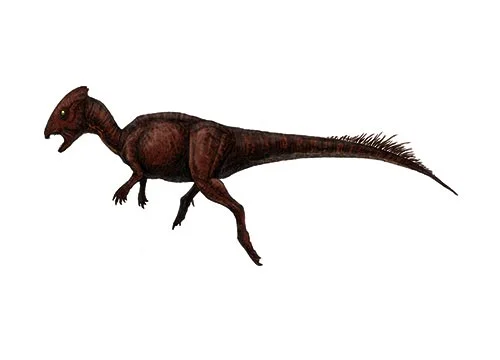Homalocephale (Even head)

Ho-mah-luh-sef-uh-lee
Maryanska and Osmolska - 1974
Herbivore
Estimated 1.5 – 1.8 meters long
Euornithopod
H. calathocaeros (type)
Mongolia, Nemegt Formation
Late Cretaceous, 70 million years ago
Homalocephale Facts
Homalocephale, meaning “even head,” is a genus of small bipedal dinosaur that lived during the Late Cretaceous period, approximately 70 million years ago. It is known from fossils found in what is now Mongolia.
Homalocephale is known for its distinctive domed skull, which was flat on the top and lacked the bony knobs or spikes that are present on the skulls of many other Pachycephalosaurid dinosaurs. It had a short, thick neck, a long, stiff tail, and powerful hind legs, which would have allowed it to run quickly and maneuver over uneven terrain.
Although it is classified as a Pachycephalosaurid dinosaur, Homalocephale was not as heavily built as its relatives and lacked the thickened skull bones that are typical of the group. It is thought to have used its dome-shaped skull for head-butting and display, much like other Pachycephalosaurids, although it may have had a different function due to its flatter skull shape.
Homalocephale was a herbivorous dinosaur, feeding on a variety of plant material such as ferns and cycads. It likely lived in small groups or family units and may have had complex social behaviors. It lived alongside other dinosaurs such as Velociraptor and Protoceratops in the Late Cretaceous ecosystems of Mongolia.
Homalocephale is an important example of the diversity of dinosaurs during the Late Cretaceous period, and its unique skull morphology has provided valuable insights into the evolution and function of the skulls of Pachycephalosaurid dinosaurs.



